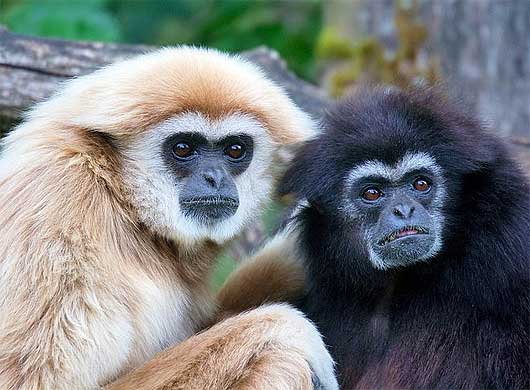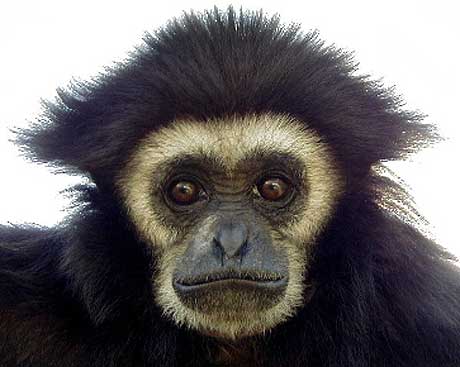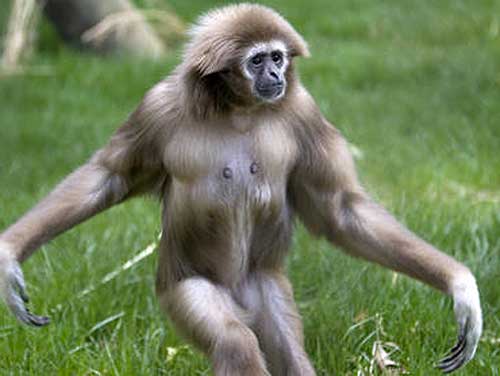Gibbons – The Most Agile Tree Swingers

Gibbons are a family of primates referred to as “lesser apes”. There are twelve species and they all share similar characteristics. They also share many of the classic primate characteristics including: flattened faces, enlarged brains, stereoscopic vision, opposable digits and arms longer than legs.

Who are you calling “lesser ape”?
In relation to other apes, gibbons are quite small and agile. Their hair is dense and fluffy and you cannot tell the difference between the sexes by size like you can with some other apes. Adult females tend to weigh more than adult males. They have exceptionally long arms which they use for a spectacularly impressive arm-swinging motion. This arm-swinging is known by the specialized term “brachiation”. They also have particularly long fingers and hands although their thumb is short in comparison and their hands are set in a hook shape for use in their swinging. They are believed to be the fastest and most agile of all non-flying, tree-dwelling mammals.

Most other apes build nests but gibbons do not. They sleep sitting up and tuck their heads into their laps. They wrap their long arms around their knees for warmth and remain in this position throughout their sleep.

Gibbons live in small monogamous families consisting of the mating pair and usually around four offspring. This is very unusual for a primate as they do not tend to live monogamously. The hierarchy within the family is also unusual. The adult female is the head of the family with the female offspring being next in line. They are then followed by the male offspring with the adult male being at the bottom of the order.

Gibbons are well known for their strong voice and its loudness can be heard up to a mile away and is used for many purposes including defence of territory and letting others know of their position. They are known as a very territorial group and so hearing their cry can be a sign that they feel threatened.
Gibbons thrive in subtropical or tropical climates, most notably rainforests from India to China including the islands of Borneo, Java and Sumatra. They are an endangered species due to the extent of deforestation across the globe.
